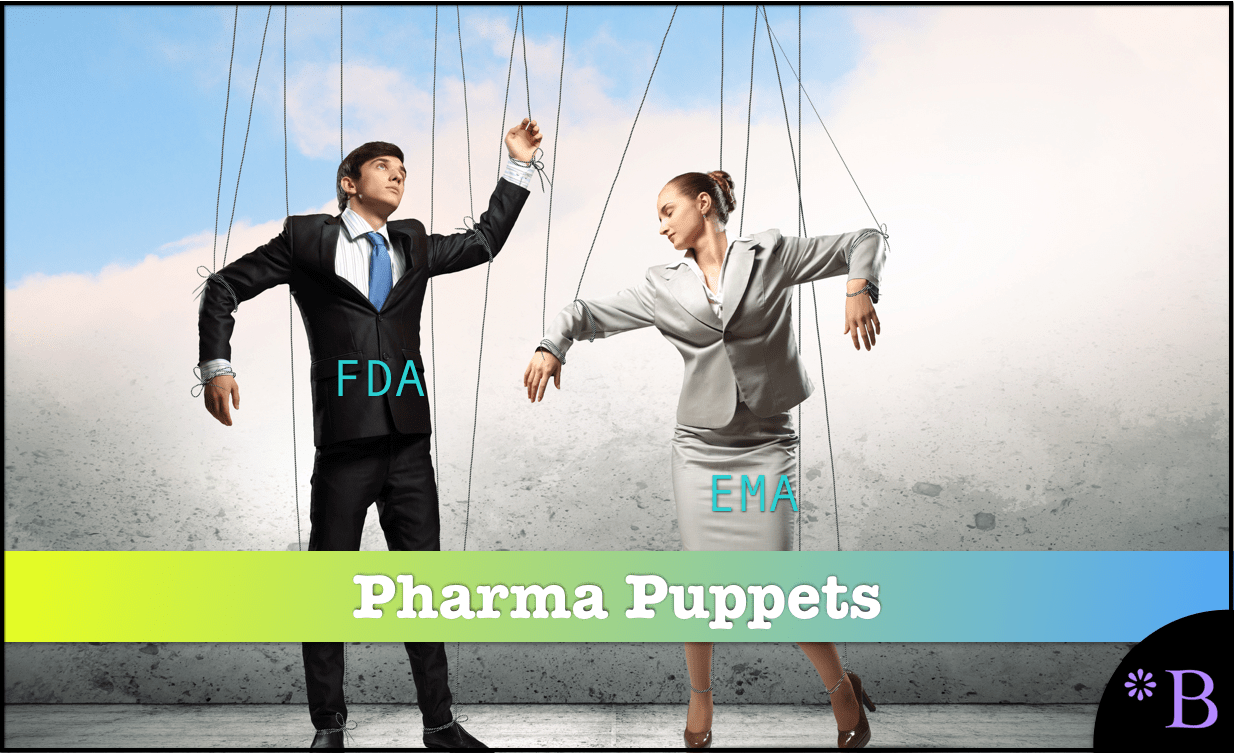How Both The FDA And The European Medicine Agency Are Controlled By Pharmaceutical Companies
Executive Summary
- The FDA and EMA do fill very similar regulatory roles.
- The problem is that pharmaceutical companies control both agencies.

Introduction
The FDA and EMA are two of best-known drug regulators in the world. Both of these regulators have the same problem.
Our References for This Article
If you want to see our references for this article and related Brightwork articles, visit this link.
How Does the FDA Differ From the EMA?
Because the FDA is a single approval and enforcement agency, it has some advantages over the EMA, particularly in a crisis, because it does not have to coordinate among many states or countries. The EMA is a secretariat for a network of experts, but, unlike the FDA, it does not have the final word on drug approval (the European Commission does). Additionally, while the EMA coordinates marketing authorization for the EU nations, the Member States are responsible for enforcement, maintaining licensing, and controlling sales and promotional activities of drugs. The FDA and the EMA also have different requirements for the approval and use of medical devices. The FDA requires valid scientific evidence that devices are both safe and effective. By contrast, the European CE mark requires only proof of safety and that the device performs in a manner consistent with the manufacturer’s intended use.
Despite their differences, both the FDA and the EMA are geared toward a similar goal: the evaluation of the quality, safety and efficacy of medicinal products. – Retina Today
How the EMA Works For Pharmaceutical Companies and Is Paid For By Them
We cover in the article The Constant Covid Vaccine Manufacturing Quality Problems, how the EMA hid the fact that they had concerns about vaccine manufacturing quality from the public. One might wonder why the EMA did this until one reads the following quotation.
It seems implausible, but 85.70% of the agency’s operating budget (346 million euros) comes from fees paid by the pharmaceutical industry and only 14.30% from public funding from the European Union.
As an agency of the European Commission, the EMA’s obligations in terms of transparency and access to documents derive from directives stipulating that any document held by the EMA in the course of its activities is in fact a public document.
However, the journal Prescrire has shown that the EMA refuses to communicate many documents, and that those that are transmitted are largely redacted.
“The pharmaceutical industry firmly holds the reins of a vast and richly endowed lobbying machine that has almost systematic access to decision-makers in the Commission […] and the Brussels institutions, including the EMA.” – Europe Reloaded
And we have our answer. The EMA is just an extension of the pharmaceutical industry, just like the FDA in the US. This means that between the US and Europe combined do not have a single drug regulator that is not entirely controlled by the drug companies.
Just a Tiny Sample of the FDA’s Track Record
Example #1: No Standards
The FDA has virtually no standards for drug approval, as we cover in the article How Low Are the FDA’s Standards of Evidence for New Drug Approval?
Example #2: Hiding Adverse Reactions From The Public
The FDA actively hides adverse drug reactions from the public as is covered in the article The FDA, CDC and NIH Do Not Want Adverse Drug Reactions Counted.
Example #3: Doing Nothing To Make The Covid PCR Tests Valid
The FDA, along with other medical authorities, misled the public on PCR tests for covid as is covered in the article How the CDC, FDA and USA Today Misrepresented The Effectiveness of Covid PCR Tests.
Furthermore, the FDA refused to specify the number of cycles on the PCR test for covid, meaning that manufacturers produced high cycle tests that created very large number of false positives, as is covered in the article PCR Test Problems: How There is Often No Live Virus Found Below 24 Cycles.